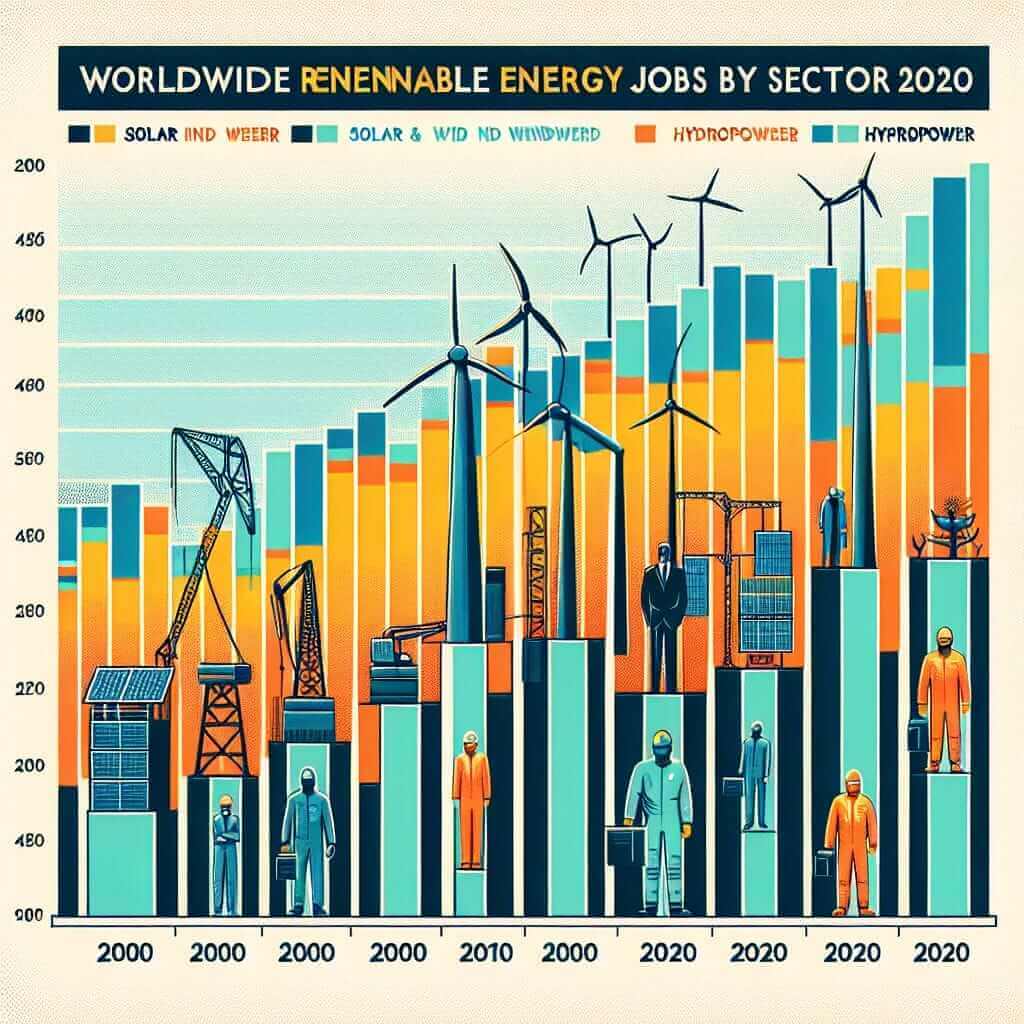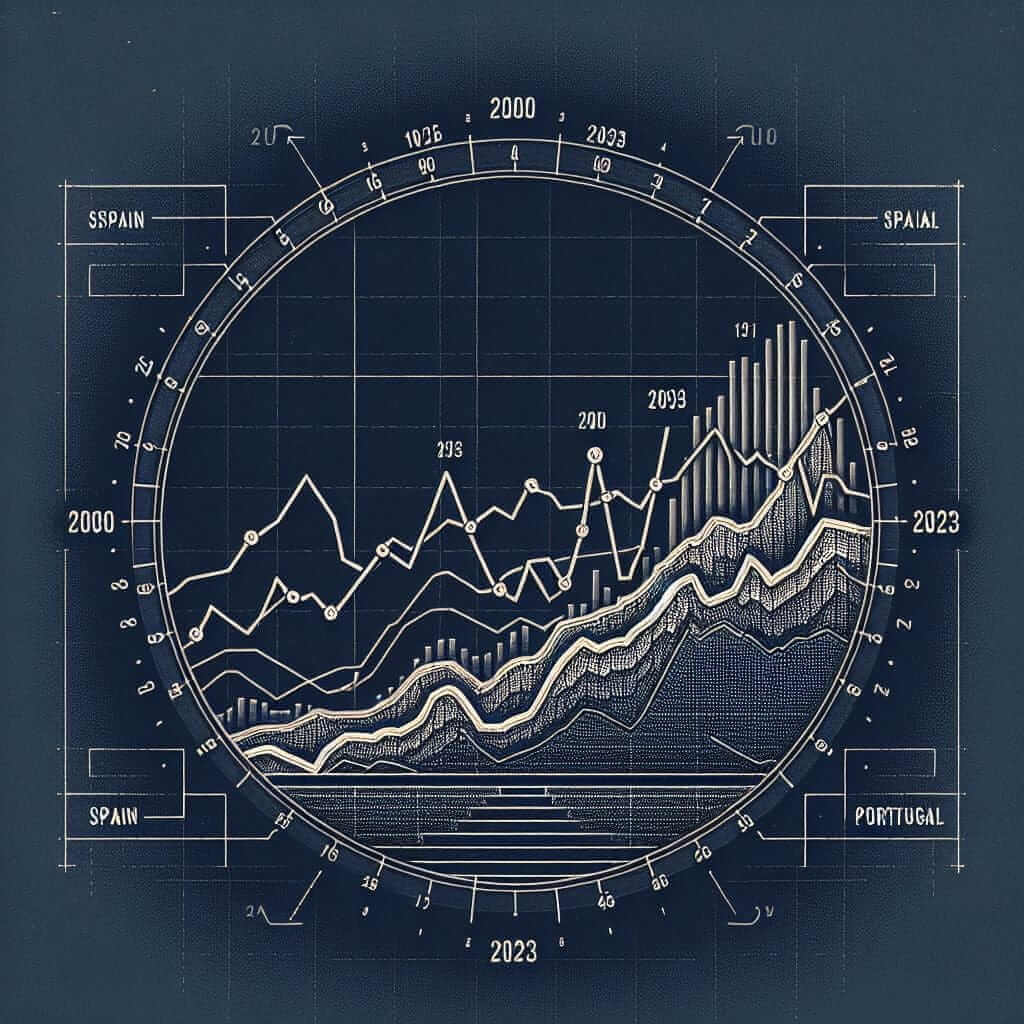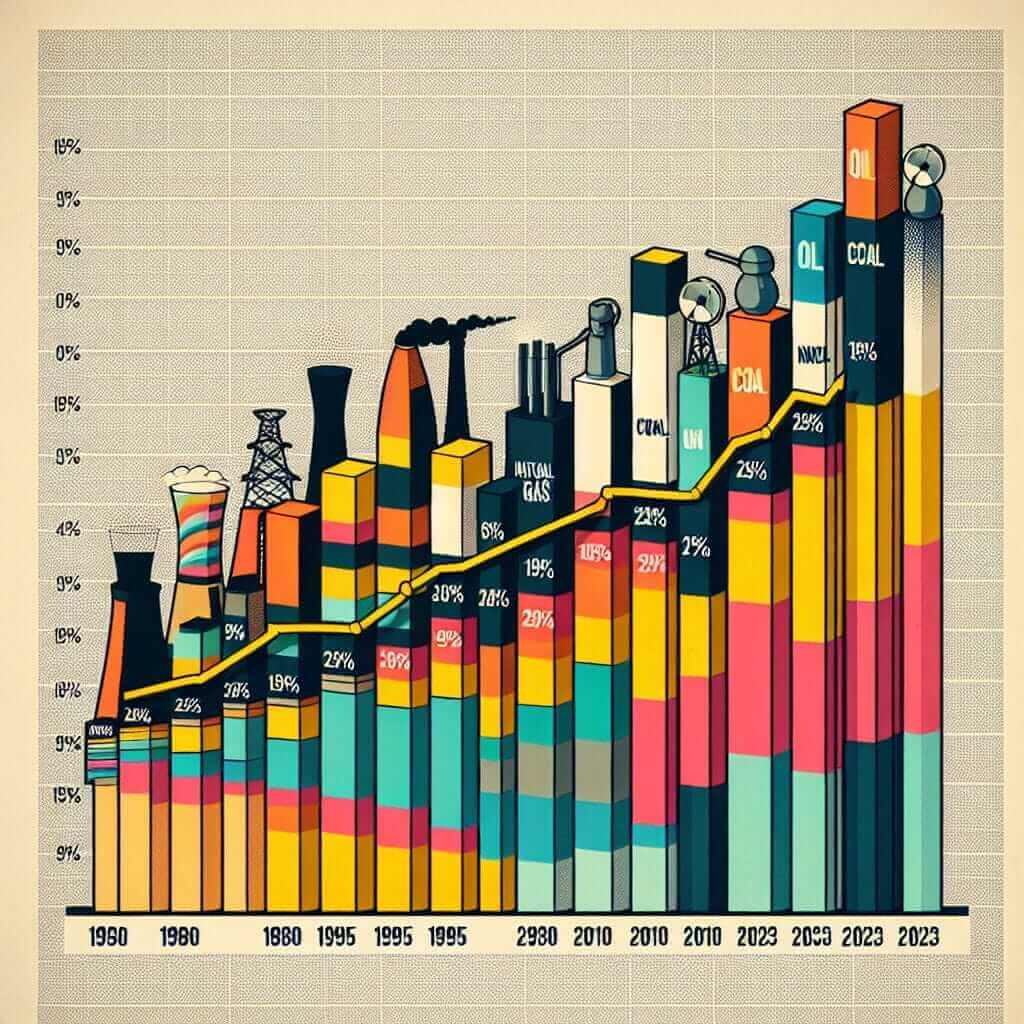The demand for skilled professionals in the renewable energy sector has surged significantly over the past two decades. As a result, “Renewable Energy Jobs by Sector” has become a hot topic, often appearing in IELTS Writing Task 1. This article will equip you with the necessary skills and knowledge to analyze and write about this trend effectively, helping you achieve a band score of 7+ in your IELTS exam.
Nội dung bài viết
Understanding the Trend and Potential IELTS Questions
Before delving into the specifics, let’s consider some potential IELTS Writing Task 1 questions related to this topic:
- The chart below shows the percentage of renewable energy jobs by sector globally between 2000 and 2020.
- The table illustrates the number of people employed in different renewable energy sectors in a particular country from 2010 to 2020.
- The graph compares the growth of employment in solar and wind energy sectors worldwide over the last decade.
Sample IELTS Writing Task 1 Question and Model Answer
Let’s choose the first question from above and create a sample question with a corresponding chart:
The chart below shows the percentage of renewable energy jobs by sector globally between 2000 and 2020.
| Sector | 2000 | 2005 | 2010 | 2015 | 2020 |
|---|---|---|---|---|---|
| Solar PV | 10% | 15% | 25% | 35% | 45% |
| Wind Power | 8% | 12% | 18% | 22% | 28% |
| Hydropower | 60% | 55% | 45% | 35% | 20% |
| Biomass | 15% | 12% | 8% | 6% | 5% |
| Other Renewables | 7% | 6% | 4% | 2% | 2% |
 Renewable Energy Jobs by Sector
Renewable Energy Jobs by Sector
Write a report for a university lecturer describing the information shown below.
Model Answer:
The provided chart illustrates the global distribution of renewable energy jobs across various sectors from 2000 to 2020.
Over the two decades, a significant shift in employment patterns within the renewable energy sector is evident. In 2000, hydropower dominated the industry, accounting for 60% of jobs. However, it experienced a substantial decline, falling to 20% by 2020.
Conversely, the solar PV sector witnessed remarkable growth, surging from a mere 10% in 2000 to a commanding 45% by 2020. Similarly, wind power employment exhibited an upward trend, rising steadily from 8% to 28% over the same period.
Biomass and other renewables, on the other hand, experienced a gradual decline in their share of employment. Biomass fell from 15% to 5%, while other renewables dropped from 7% to a marginal 2%.
In conclusion, the data reveals a clear transition towards solar and wind power as dominant sources of employment within the renewable energy sector, while traditional hydropower and other sources have seen a reduction in their workforce. (154 words)
Key Points and Vocabulary:
- Paraphrasing: Notice how the model answer paraphrases the question prompt, using synonyms like “illustrates” instead of “shows,” and “distribution” instead of “percentage.”
- Data Trends: The answer focuses on the most significant trends, highlighting the growth of solar and wind power and the decline of hydropower.
- Comparative Language: Words and phrases like “conversely,” “similarly,” “on the other hand,” and “while” are used effectively to compare and contrast different sectors.
- Time Expressions: The answer utilizes various time expressions like “over the two decades,” “in 2000,” “by 2020,” and “over the same period” to indicate the timeframe of the changes.
Difficult Vocabulary:
- Surge (v.): to increase suddenly and strongly. (Ex: The demand for solar panels has surged in recent years.)
- Dominate (v.): to be the largest, most important, or most noticeable part of something. (Ex: Hydropower used to dominate the renewable energy sector.)
- Substantial (adj.): large in size, value, or importance. (Ex: There has been a substantial increase in wind power capacity.)
- Remarkable (adj.): unusual or surprising in a way that causes people to take notice. (Ex: The growth of the solar PV industry has been remarkable.)
- Transition (n.): a change from one form or type to another over a period of time. (Ex: The energy transition involves moving away from fossil fuels.)
Conclusion
Mastering the art of describing data related to “Renewable Energy Jobs by Sector” is crucial for success in the IELTS Writing Task 1. By understanding the trends, using appropriate vocabulary and grammar, and practicing regularly, you can confidently tackle any question on this topic and achieve your desired band score.


